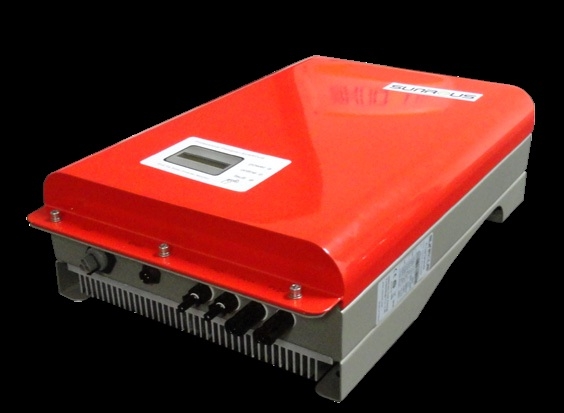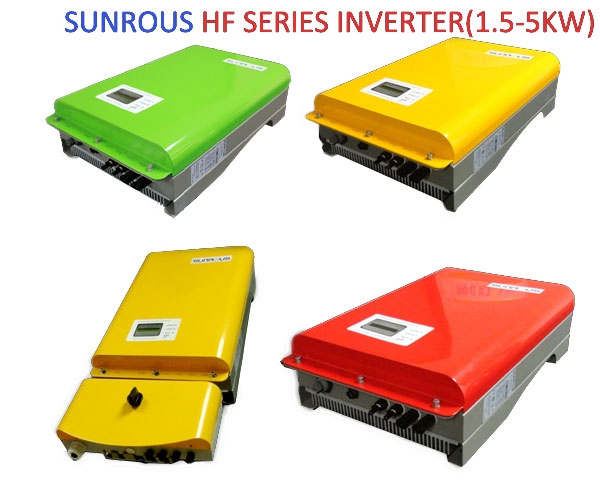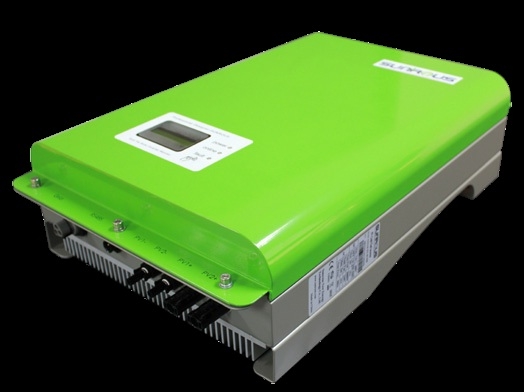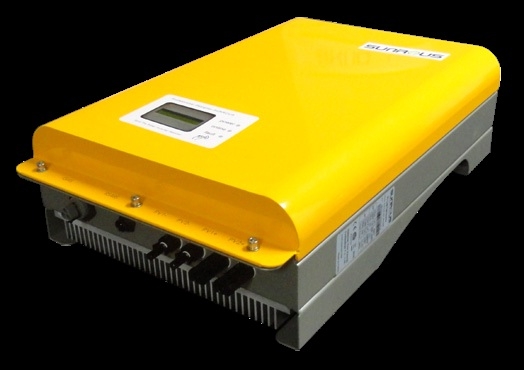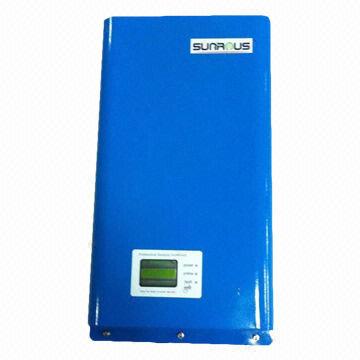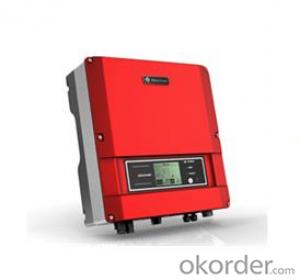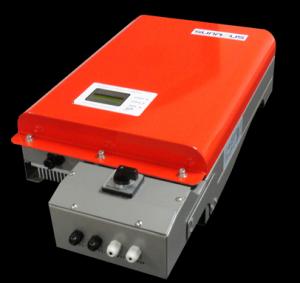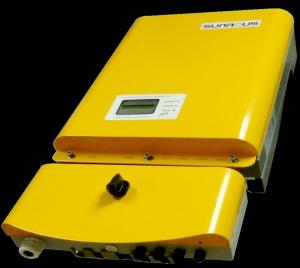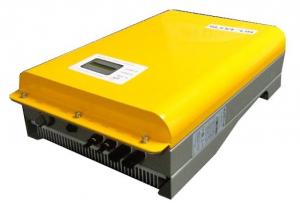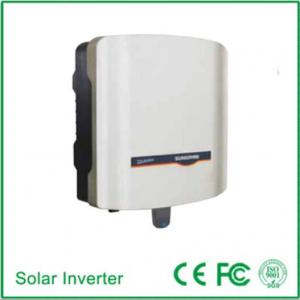Utl Solar Inverter High Frequency Transformer Isolation PV Grid-Tied Inverter
- Loading Port:
- Shanghai
- Payment Terms:
- TT or LC
- Min Order Qty:
- 1000 cm
- Supply Capability:
- 1000 cm/month
OKorder Service Pledge
OKorder Financial Service
You Might Also Like
1. Structure of High frequency transformer isolation PV Grid-Tied Inverter Description:
•The first manufacturer authorized by ETL institution in china;
• The first china HF PV grid-tied inverter tested by the PHOTON Lab with UL standard, reach the top level compared with SMA Sunny Boy HF series.
2. High frequency transformer isolation PV Grid-Tied Inverter Images
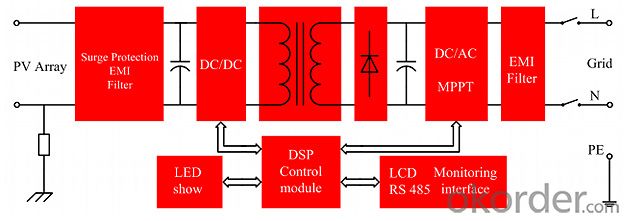
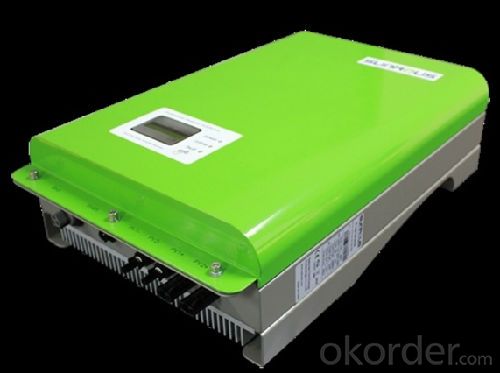
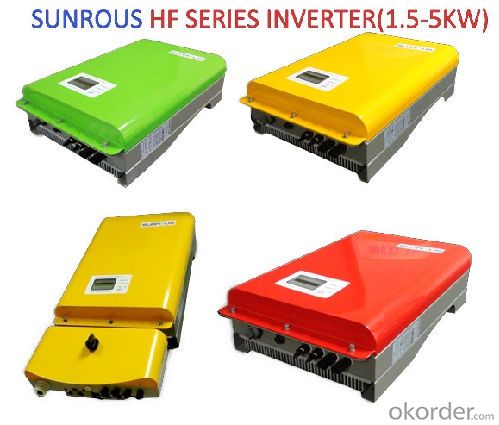
3. High frequency transformer isolation PV Grid-Tied Inverter Specification
| GT1.5-ZX-01/HF | GT2.0-ZX-01/HF | GT2.5-ZX-01/HF | GT3.0-ZX-01/HF | GT4.0-ZX-01/HF | GT5.0-ZX-01/HF |
Input(DC) | ||||||
Max.DC Power | 1600W | 2100W | 2650W | 3150W | 4200W | 5200W |
Max.DC Voltage | 600V | |||||
PV Voltage range, MPPT | 150V ~ 550V | 150V ~ 550V | ||||
Max.input current | 10.0A | 14.0A | 16.0A | 20.0A | 25.0A | 30.0A |
Number of MPP trackers | 1 | |||||
Max.number of strings (parallel) | 1 | 1 | 2 | 2 | 3 | 3 |
Output(AC) | ||||||
Nominal AC power / | 1500W | 2000W | 2500W | 3000W | 4000W | 5000W |
Max AC power | ||||||
Max.output current | 13.0A/7.0A | 17.0A/9.0A | 21.0A/12.0A | 25.0A/14.0A | 21.0A | 30.0A |
Nominal AC Voltage / range | 102-138Vac/180-264Vac | 180-270Vac | ||||
AC grid frequency / range | 47.5-51.5Hz / 59.3-60.5Hz | |||||
Power factor at rated power | 1 | |||||
THD | < 3% | |||||
AC connection | Single-phase | |||||
Efficiency | ||||||
Max. efficiency/Californian efficiency | > 98.0% / > 97.0% | |||||
MPP adaptation efficiency | > 99.0% | |||||
Protection devices | ||||||
DC reverse polarity protection | √ | |||||
AC short-circuit protection | √ | |||||
Ground fault monitoring | √ | |||||
Grid monitoring | √ | |||||
Output Transient Voltage Suppression | √ | |||||
Over load | √ | |||||
Anti-islanding | √ | |||||
General data | ||||||
Dimensions | 350 / 560 / 160 | 370 / 540 / 185 | ||||
(W/ H / D) in mm | ||||||
Weight(Kg) | 16 | 19 | 23 | |||
Operating temperature range | -25 ~ +60℃ | |||||
Storage temperature range | -40 ~ +70℃ | |||||
Ambient humidity | 0 ~ 100% | |||||
Consumption (night) | < 0.5W | |||||
Topology | HF-transformer galvanic isolation | |||||
Cooling concept | Convection | |||||
Enclosure type | IP65 / NEMA 3R | |||||
Features | ||||||
DC connection: PV special connector | √ | |||||
AC connection: connector | √ | |||||
LCD display & Backlit | √ | |||||
LED display | √ | |||||
Interfaces: RS485 | √ | |||||
Warranty: 10 years | √ | |||||
Certificates & approvals | G83 / G59 / TUV / SAA / ETL / JET/ CE | |||||
4. Features of High frequency transformer isolation PV Grid-Tied Inverter
·5 years warranty
· Sealing stainless steel shell, suitable for indoor or outdoor installation
· High frequency transformer isolation
· The highest effciency achieves 98%
· Wide input Voltage range
· Adopt connectors type cable connection, Easy operation and installation
· Best tracking effciency with OptiTrac MPP control
· operating temperature range -25 ℃ to + 55℃
· High reliability due to complete protection function
· Anti-theft protection
· Plug-in grounding
- Q: Can a solar inverter be used with both AC and DC power sources?
- No, a solar inverter is designed to convert DC power from solar panels into AC power for use in standard electrical systems. It cannot be used with both AC and DC power sources simultaneously.
- Q: What are the methods of photovoltaic grid-connected inverter control
- The square wave output of the inverter using pulse width modulation integrated circuits, such as SG3525, TL494 and so on. Practice has proved that the use of SG3525 integrated circuits, and the use of power FET as a switching power components, to achieve high performance of the inverter, because the SG3525 has a direct drive power FET capability and has an internal reference source and operational amplifiers and Undervoltage protection, so its peripheral circuit is very simple.
- Q: What is the role of power ramp rate control in a solar inverter?
- The role of power ramp rate control in a solar inverter is to regulate the rate at which the power output of the solar panels increases or decreases. This control feature helps to ensure a smooth and gradual transition in power generation, thereby preventing sudden fluctuations and potential grid instability. By managing the rate at which power is introduced to the grid, power ramp rate control helps to maintain the stability and reliability of the overall electrical system.
- Q: How does a solar inverter convert DC to AC power?
- A solar inverter converts direct current (DC) power generated by solar panels into alternating current (AC) power that can be used to power appliances and feed into the electrical grid. It does this through a two-step process. Firstly, the DC power from the solar panels is converted into a high-frequency AC signal using power electronics. Then, this AC signal is transformed into the desired AC output voltage and frequency using pulse width modulation techniques. This allows for efficient and reliable conversion of solar energy into usable electricity.
- Q: How does a solar inverter handle shading or partial obstruction of solar panels?
- A solar inverter is equipped with a technology called Maximum Power Point Tracking (MPPT) which allows it to handle shading or partial obstruction of solar panels. MPPT enables the inverter to constantly monitor the output of each individual solar panel and adjust the system's voltage and current accordingly. By doing so, the inverter ensures that the shaded or partially obstructed panels do not significantly affect the overall performance of the solar array. This way, it optimizes the energy production of the unshaded panels while minimizing the impact of shading on the system's efficiency.
- Q: Can a solar inverter be used with smart home systems?
- Yes, a solar inverter can be used with smart home systems. Smart home systems are designed to integrate and control various devices and appliances, including solar inverters. By connecting the solar inverter to a smart home system, users can monitor and manage their solar energy production, track energy consumption, and optimize energy usage for maximum efficiency. This integration allows for greater control and automation of the solar power system within the smart home ecosystem.
- Q: Can a solar inverter be used in a remote location without access to the grid?
- Yes, a solar inverter can be used in a remote location without access to the grid. Solar inverters are designed to convert the direct current (DC) generated by solar panels into the alternating current (AC) that can be used to power electrical devices. In remote locations, solar panels can be used to generate electricity independently, and the solar inverter can then convert this DC power into AC power for immediate use or to be stored in batteries for later use. This allows for the utilization of solar energy even in areas without grid connectivity.
- Q: Can a solar inverter be used in remote areas without access to the grid?
- Yes, a solar inverter can be used in remote areas without access to the grid. Solar inverters are designed to convert the direct current (DC) electricity generated by solar panels into alternating current (AC) electricity that can be used to power electrical appliances. In remote areas, solar panels can be installed to harness sunlight and convert it into electricity, which can then be used through the solar inverter to provide power to homes, businesses, or any other electrical devices without the need for a grid connection.
- Q: Can a solar inverter be used with a net metering system?
- Yes, a solar inverter can be used with a net metering system. In fact, a solar inverter is an essential component of a net metering system. It converts the direct current (DC) electricity generated by the solar panels into alternating current (AC) electricity that can be used to power the home or business. The excess electricity produced by the solar panels is fed back into the grid through the net meter, allowing the utility company to credit the owner for the excess energy produced.
- Q: What is the role of a cooling system in a solar inverter?
- The role of a cooling system in a solar inverter is to regulate and dissipate heat generated during the conversion of DC power from solar panels to AC power for use in homes or businesses. By maintaining optimal operating temperatures, the cooling system ensures the inverter's components do not overheat, which could lead to reduced efficiency, performance degradation, or even system failure.
Send your message to us
Utl Solar Inverter High Frequency Transformer Isolation PV Grid-Tied Inverter
- Loading Port:
- Shanghai
- Payment Terms:
- TT or LC
- Min Order Qty:
- 1000 cm
- Supply Capability:
- 1000 cm/month
OKorder Service Pledge
OKorder Financial Service
Similar products
Hot products
Hot Searches
Related keywords





